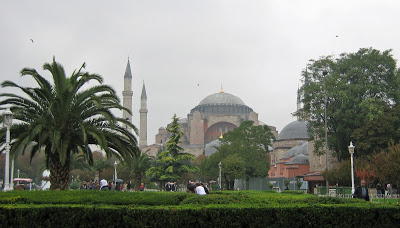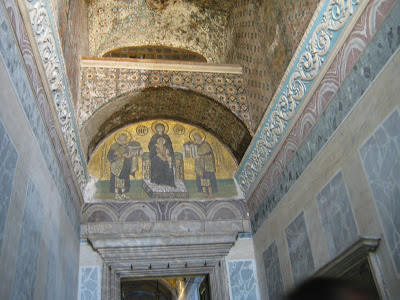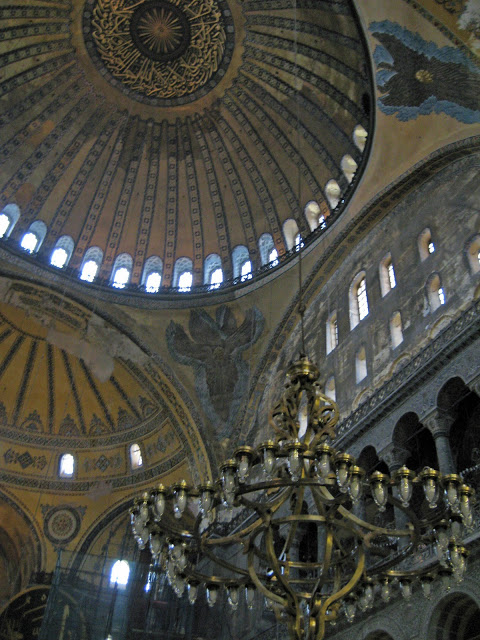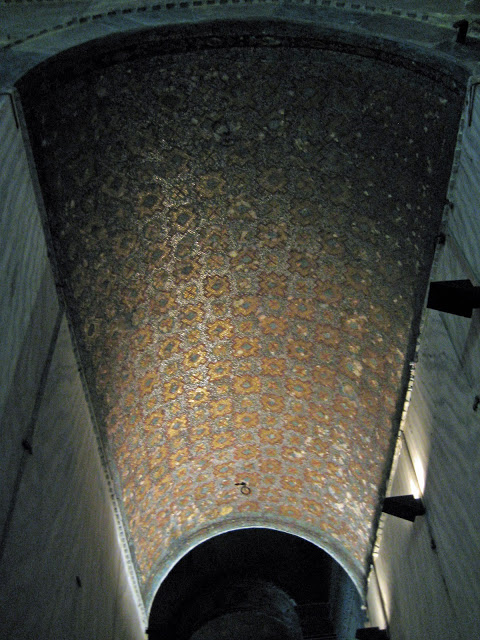The architecture and art of some of the world's largest places of worship never fail to bring tears to my eyes. It doesn't matter what traditions the members practice, I can feel the intense love, joy, and sorrow that has been celebrated, spilled and comforted within its walls.
Two very beautiful examples are in the Sultanahmet section of Istanbul. Ayasofya (Turkish) or Hagia Sophia (Greek) was dedicated in 360 (3rd version in 532 is what exists today) and remained the center of the Eastern Orthodox Church for nearly 1000 years. The second being the Blue Mosque which I will do in a separate post since I have some fabulous photographs to share of both.
Ayasofya is considered to be one of the greatest examples of Byzantine architecture and considered to have changed the history of architecture with its massive dome. It was the largest cathedral in the world for 1000 years.
In 1453 it became a mosque and human forms in mosaics were covered within the sanctuary since portraying the human form in a mosque is prohibited in their beliefs. In 1935, the first Turkish President Ataturk founded the modern democratic secular Republic of Turkey and at that time turned Ayasofya into a museum. There is controversy, of course, on what should be portrayed from the different eras (especially since nearly all Turks are Muslim) and where within the structure, but restoration is taking place and beautiful golden mosaics are being uncovered from the Orthodox era in the 2nd floor galleries. I believe most Turks are very proud of their heritage and their long and varied history which is rich due to its locale and the various wars and religious crusades that took place there. Many national histories are blemished by man's desire for power and greed, including our own, and it takes time and openness to portray it honestly. One can gain a lot of national pride and open doors to a past full of richness and interest with that openness. It allows for forgiveness, too.








